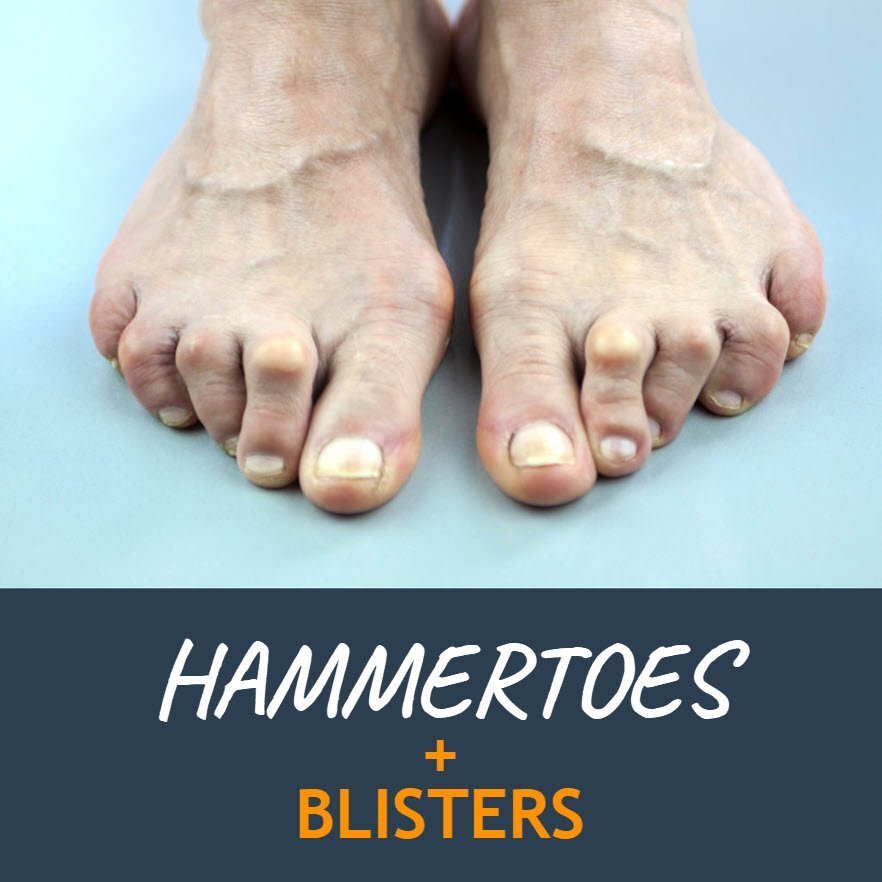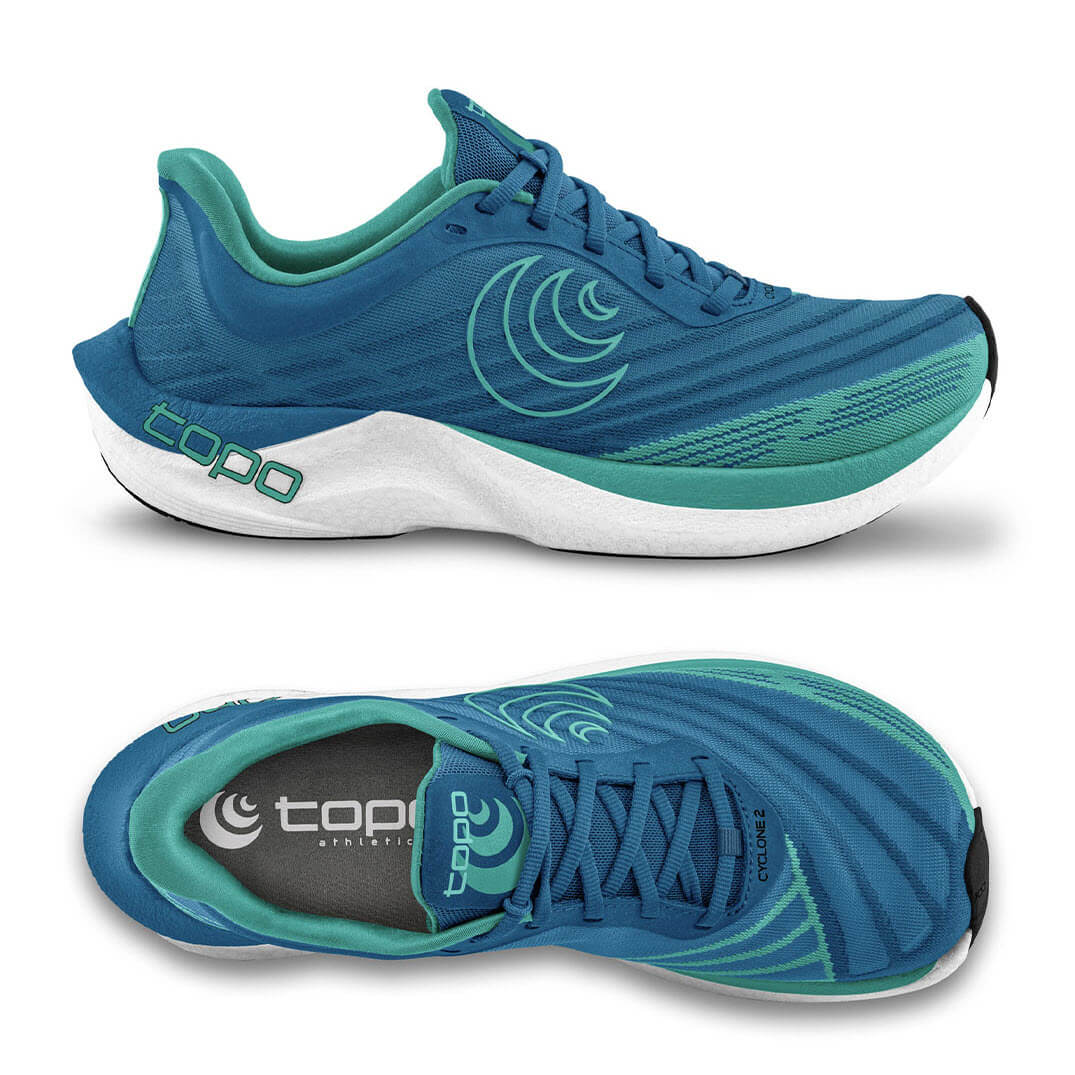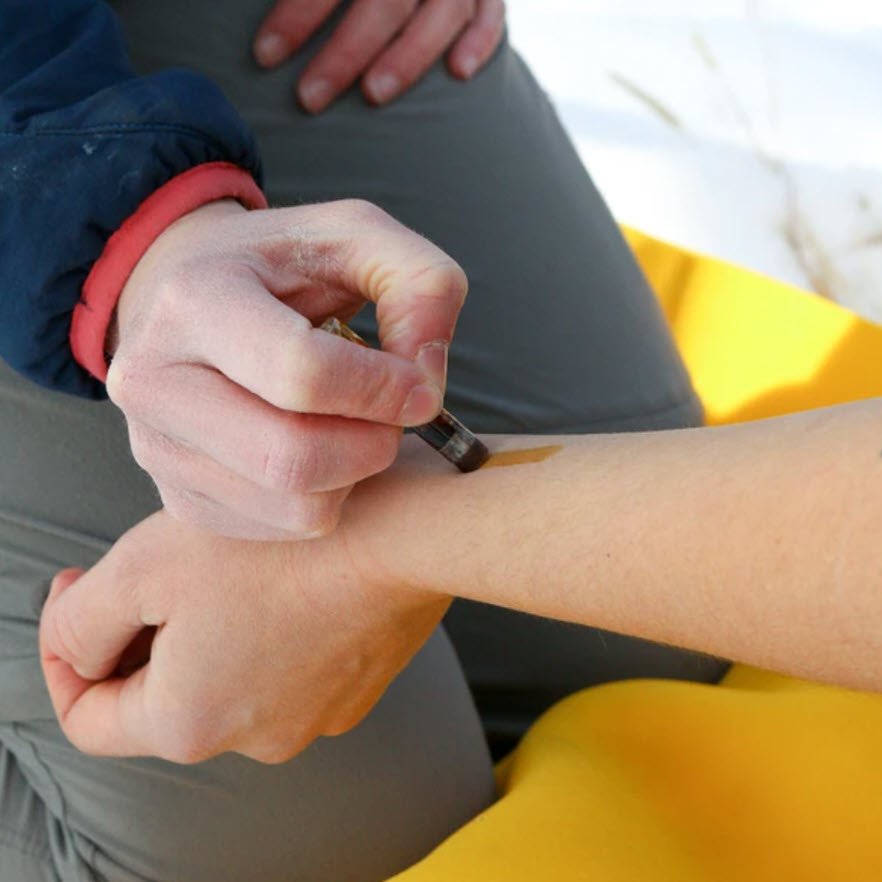What are hammertoes, a claw toe or mallet toe? What causes them to buckle and bend over like that? Will they ever straighten again? Despite the odd toe posture, people make the mistake of accepting problems like corns, callouses and blisters on the tops of toes, thinking there's nothing they can do. So, in this blog post, I am going to give you a deeper understanding of the causes of hammertoes and some remedies that would alleviate the symptoms.
With toe joints sticking out like this, it’s easy to imagine them getting pushed, pinched and rubbed by your shoe when you wear shoes and start walking or running.
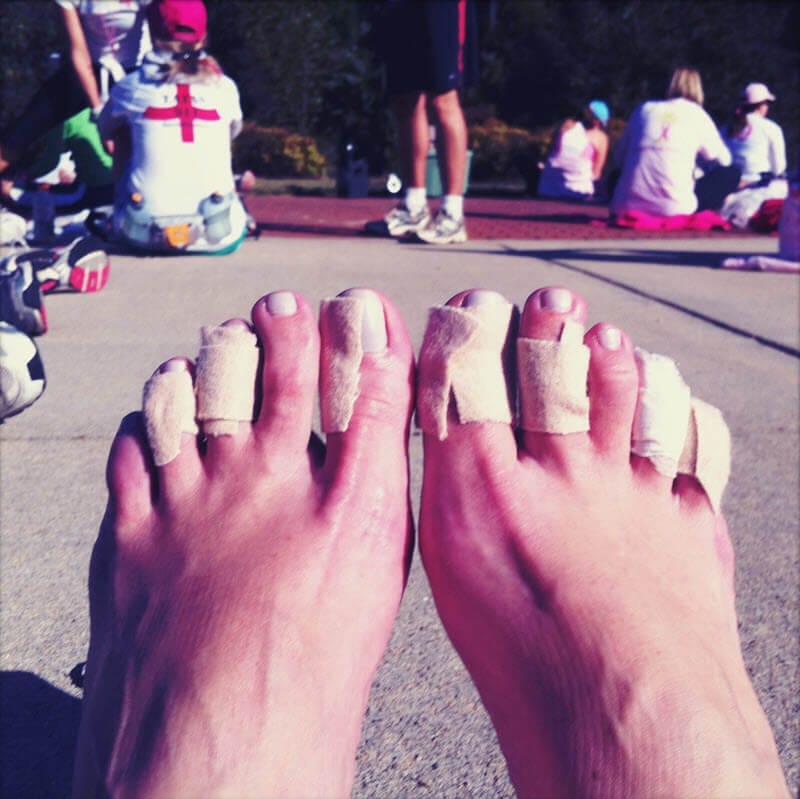
Bandaged hammer, claw and mallet toes
What are hammertoes?
A hammertoe is one of several toe deformities which includes claw toes and mallet toes (see image below). They can occur on any of the three middle toes. Hammertoes are most common on the second toe - the one next to your big toe.
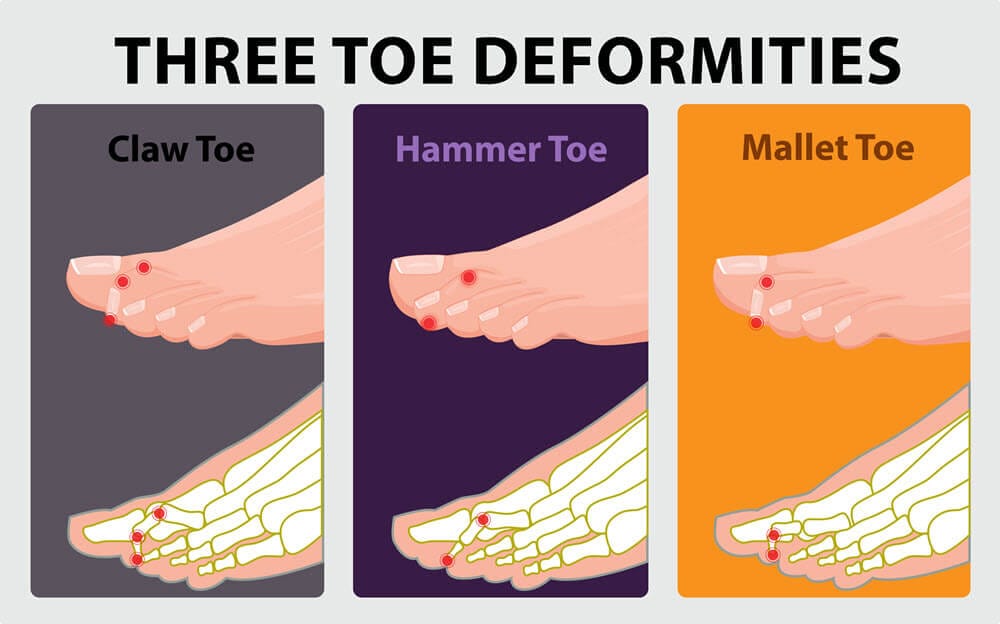
Hammertoe, claw toe and mallet toe deformities
What causes hammertoes and other bent toes?
Let’s talk collectively about what causes the three toe deformities in the picture above.
Toes consist of three bones, just like your fingers do. Similarly, your big toe has two bones, like your thumb. Normally, all three bones sit straight and in line – just like if you hold your finger out straight out. They sit straight thanks to the support of ligaments and the fine balancing act between the pull of tendons, in fact.
Claw toe demonstration:
Now bend your finger – See how the two joints stick out and become obvious. This is exactly what happens when you have a claw toe. The toe bends over and the two joints become prominent.
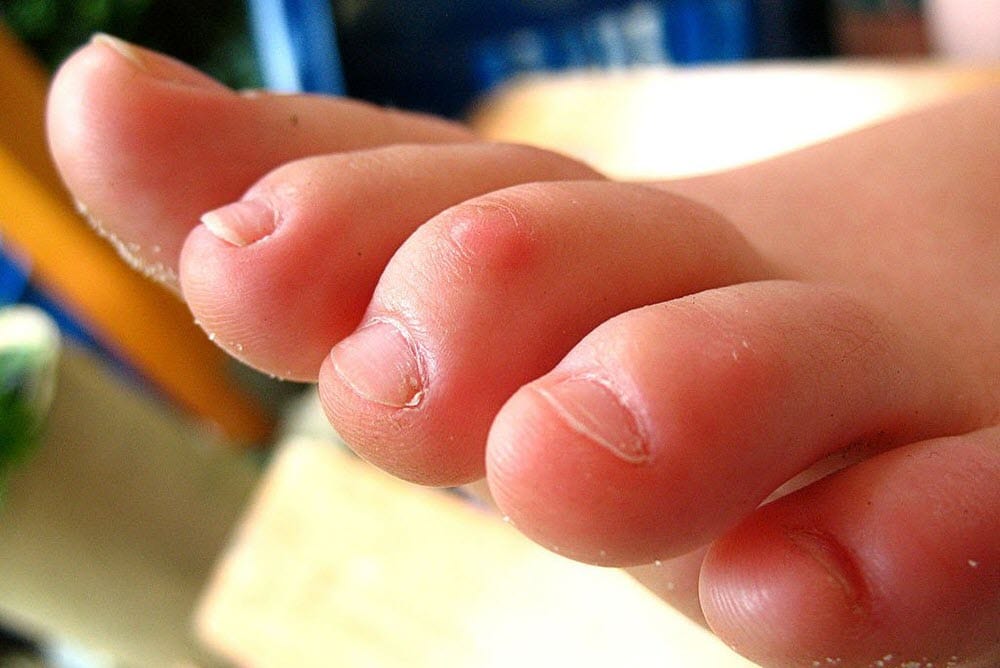
Clawed middle toe (Allen Foot Doctor)
Hammertoe demonstration
Next, bend only the first joint of your finger and keep the end joint straight. This is what happens when you have a hammer toe. The toe bends over and the first joint becomes prominent.
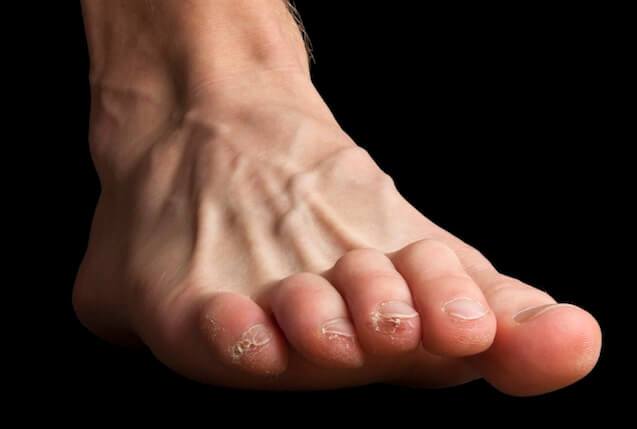
Hammertoes (Shutterstock)
Mallet toe demonstration:
Now keep the first finger joint straight and just bend the end joint. This is what happens when you have a mallet toe. The toe bends over and the end joint becomes prominent.
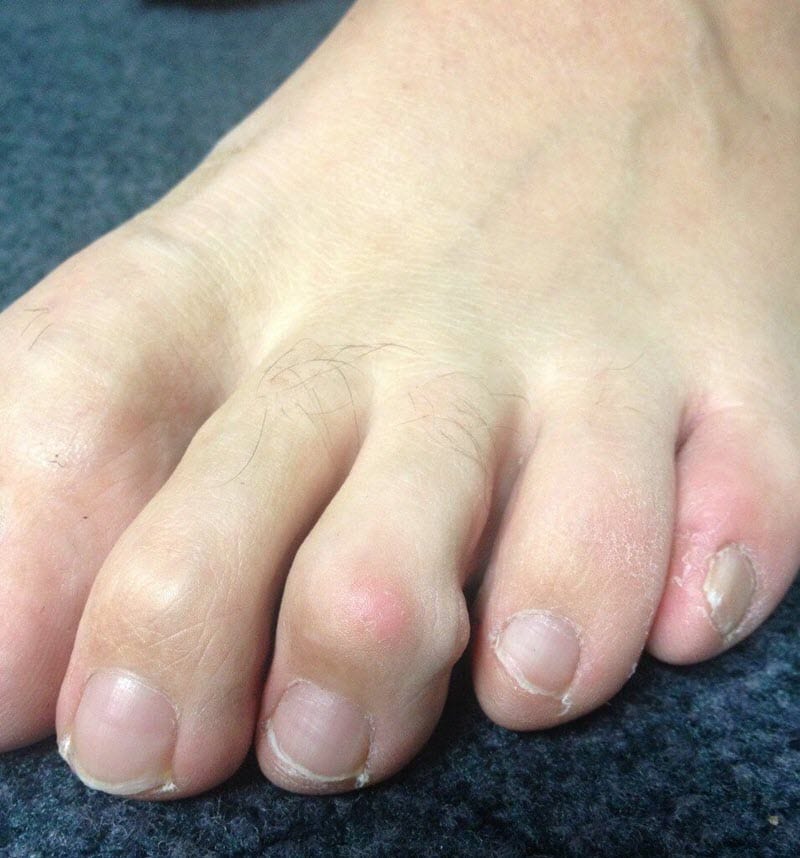
Mallet toe (London Foot and Ankle Clinic)
Imbalance to the equilibrium
Hammertoes, claw toes and mallet toes start when there is an imbalance to the equilibrium of the toe joints. Stubbing your toe, someone jumping on it, poor shoe choices holding the toes in a bent position for long periods, developing a bunion, injury… any of these scenarios could cause a change in the pulling power of one tendon over the other. This destabilisation leads to a gradual cascade of events culminating in the toe buckling.
However, it usually happens gradually. getting worse as the months and years pass. Long-term, muscles, tendons and ligaments become increasingly tight one one side of the joint, and conversely stretched on the other side. This holds the toe in its hammered, clawed or mallet position. Diseases also play a role in the cause of toe deformity - people dealing with diabetes, arthritis and neuromuscular diseases are at higher risk of misshapen toes.
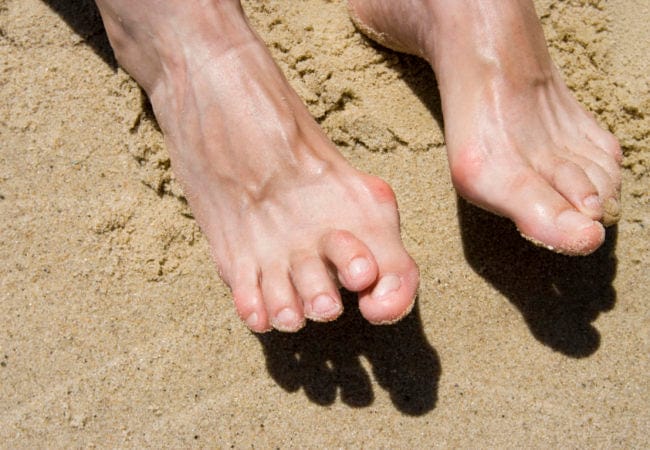
Hammertoe right foot cause by bunion. As the big toe slides across, the 2nd toe is pushed upwards. (Cleveland Clinic)
Toe length
Another factor is toe length - and how closely the curve of your toes match the curve of your shoe (see the image below). This will become relevant firstly, if you wear shoes that are too small for you; or secondly, they're too big and loose such that your foot slides forward and hits the end of your shoe. In any event, toes should not come into contact with the end of your shoe - at all! Ideally you'd have the width of your thumb between the end of your longest toe (whichever toe that is) and the end of your shoe. This gives your feet a little room to move without impacting any of your toes at the end of the shoe. But many people neglect this.
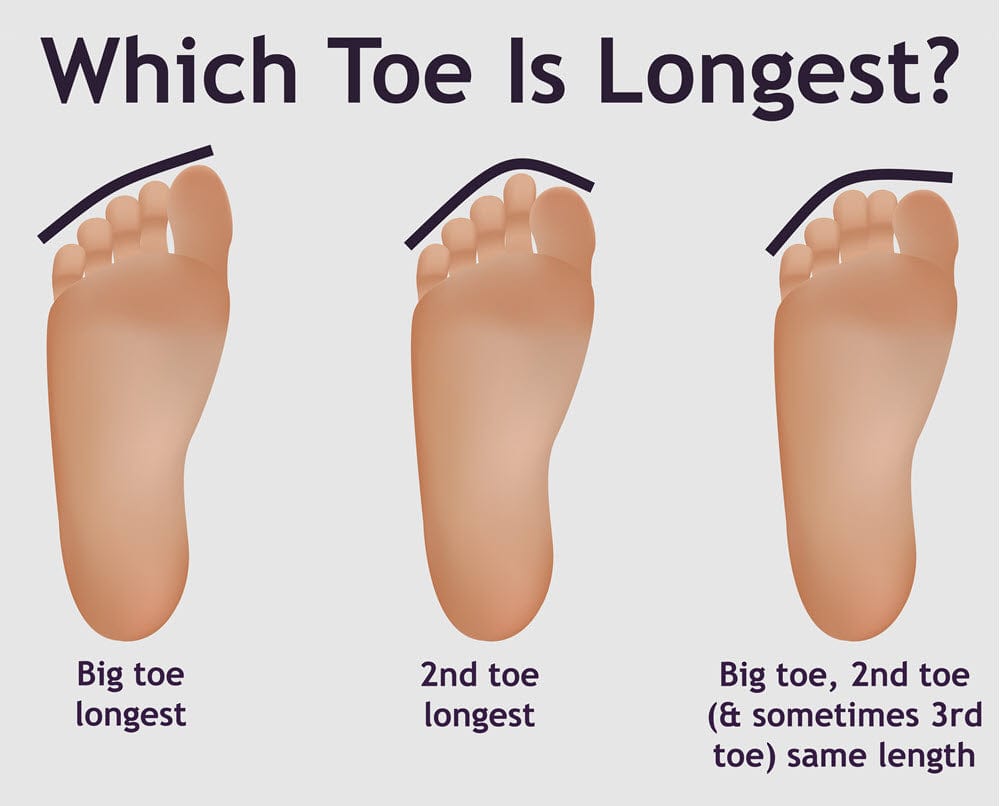
There is a large variability in which toe is longest. Which of your toes is longest? Does the curve of your toe lengths match the shape of your shoe? If not, this may put you at risk of developing a hammertoe, claw toe or mallet toe.
The toe parabola
Sometimes one toe can be especially long so as not to fit the rounded parabola of your shoe. Less commonly, the third or fourth toe can be especially longer. These long toes are the ones most likely to be affected to developing a toe deformity - if your shoes don’t fit it properly. Remember the rule of thumb for shoe-fit.
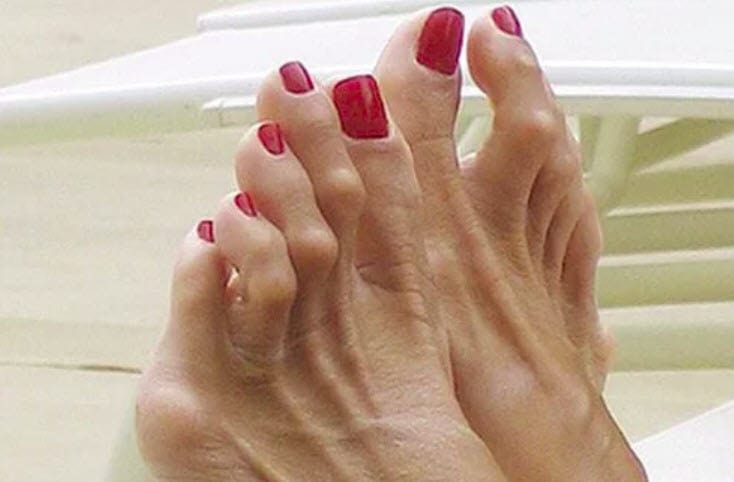
Hammertoes on the 2nd, 3rd and 4th toes. The second toe is much longer than the big toe. And if held out straight, the third toe would be longer than the big toe too. This almost certainly wouldn’t match the shape of the shoe. (MedicineNet)
Just to reiterate, if you don’t have enough room at the end of your toebox, your toe will be impacted. Similarly, if your shoes are too loose and you allow your foot to slide forward, your toes may hit up against the end of your shoe and your toes buckle.
Hammertoes can be flexible or rigid
Flexible:
In the earlier stages of a toe deformity, the toe sits in a bent position, but the joints are still flexible enough to be held straight.
Rigid:
Once the toe has been sitting in its bent position for a long time, ligaments and tendons tighten and the bones change shape. These changes maintain the bent position and the joints become stiffer and stiffer, until one day, the toe can't even be straightened at all.
How to treat claw toe, mallet toe and hammer toe symptoms
Hammertoes, claw toes and mallet toes can lead to painful corns, callouses and blisters in two areas:
1. The top of the toe
- Naturally, the more shallow the toebox of the shoe, the more it will push down on the prominent joint(s). Corns, callouses and blisters may be the result. So choose a shoe with a deep toebox.
- Gel toe sleeves can cushion the prominent joints and protect them from pressure, rubbing and shear forces.
- Your podiatrist can make a toeprop to lift the shoe off the prominent joint and save the skin from trauma.
2. The tip of the toe
- The tip of the toe isn’t designed to bear weight - it doesn’t have the natural fatty padding to tolerate this. Therefore, a gel toe cap can be used to cushion the tip of the toe.
- You can wear a toeprop to prevent the toe from bending over so much. Toeprops can be custom made by your podiatrist. Toeprops will relieve symptoms if your hammertoe, claw toe or mallet toe is at least partially flexible. If it is fixed, the toeprop may in fact lift your toe up and rub the top of the toe more!
- If you are dealing with rigid misshapen toes and finding it difficult to get relief using the other methods mentioned, surgery is a viable option consider, to straighten the toes.
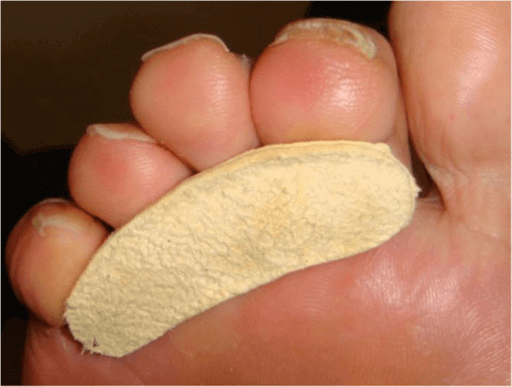
Off-the-shelf toeprops take up space under the toes so the toes are less able to bend over. (ResearchGate)
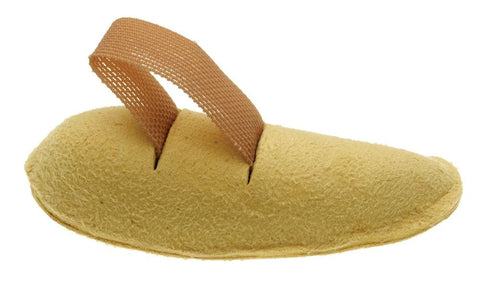
Off-the-shelf toeprops for hammertoe, claw toe and mallet toes consist of a firm foam pillow with an elastic loop that goes over one toe to hold it in place. Be careful the elastic doesn't get too tight!
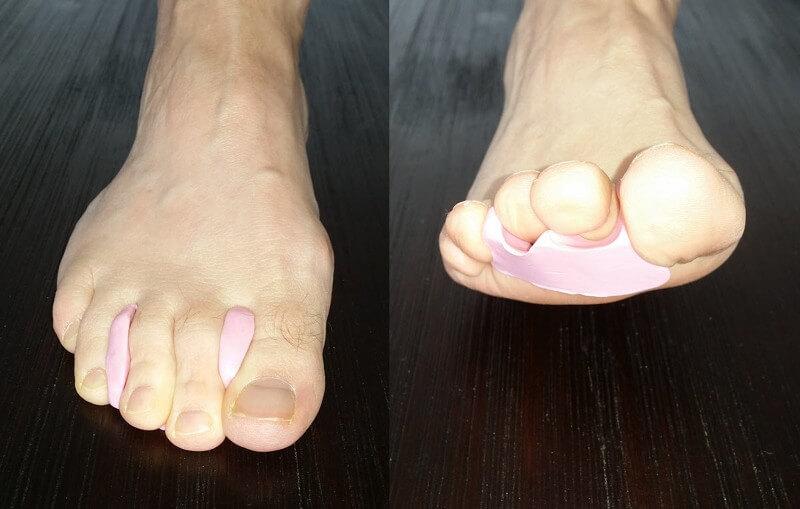
Custom made toeprop by a podiatrist. This will stop toes 2 and 3 from bending over so much. This will prevent blisters, corns and callouses on the tips of the toes.
While none of these treatments will reverse your hammertoe, claw toe or mallet toe (except surgery of course), when used correctly and frequently enough, toeprops and gel toe protectors will keep your corns, callouses and blisters at bay. If you’re in any doubt, be sure to see a podiatrist to get advice on how to maximise the effect of these interventions to minimise the symptoms.
Wrapping up
As the old saying goes, prevention is always the best cure. While easier said than done, it's for this reason podiatrists recommend wearing shoes that accommodate your toes adequately. Hammertoes and other toe deformities develop gradually. It might appear that you get away with small or loose shoes for weeks, months or even years. Once you notice the toes bending, the cascade of event has started. Be sure to consult a podiatrist if you suspect you’ve got a hammertoe, claw toe or mallet toe developing as there may be something they can do to slow the progression, alleviate your symptoms and prevent your blisters.
